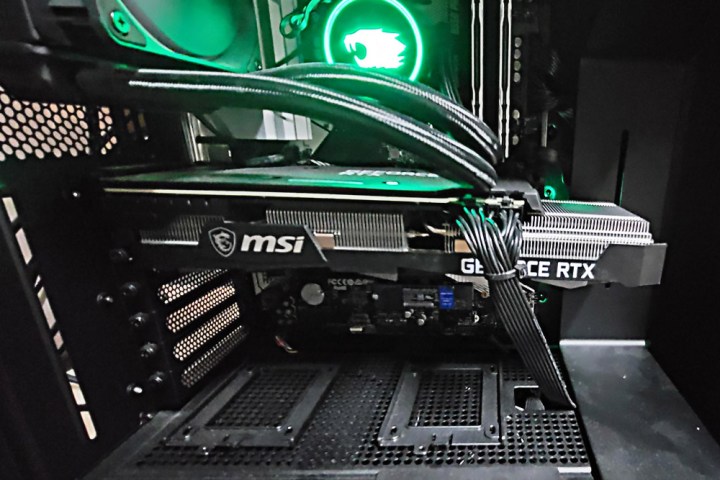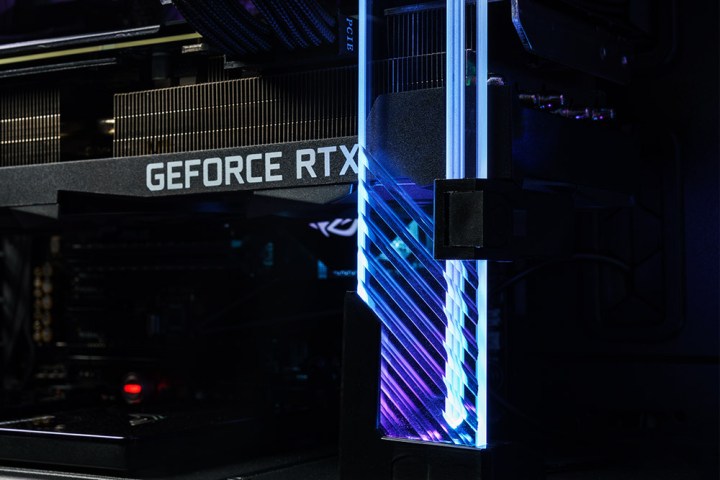Graphics card sag, or GPU sag, is something almost everyone who’s ever owned a high-end graphics card has experienced. It’s that sinking feeling you get when your expensive new GPU droops in its PCIExpress slot, testing the strength of its mounts to keep it in place. But even if it manages to do so, the long-term effect of GPU sag can be quite dramatic, leading to degradation and even failure.
Fortunately, it’s easy to fix GPU sag. If you act early, you’ve nothing to fear.

What is GPU sag?
GPU sag is when a graphics card, typically a larger, heavier one, cannot be fully supported by the PCIExpress slot and PCI Bracket. Modern graphics cards can often carry large coolers, which have significant weight to them — more than these traditional mounting points can adequately handle. With the printed circuit board (PCB) unable to hold its rigidity, the board droops, or sags downwards at the top corner without direct support.
This isn’t necessarily a problem in the short term — as long as the card is in the slot fully, it should work just fine. However, there’s a reason that many manufacturers include additional support brackets with particularly big, heavy, and expensive graphics cards: GPU sag can damage your GPU. YouTuber KrisFix-Germany reported in April that he had samples of Nvidia RTX 2080 Ti GPUs that no longer work because the memory modules closest to the PCIExpress slot have damaged connection points. He noted failed solder joints on the PCB and oxidation on the memory contacts.
He suggests that this is caused by GPU sag, where the stressed PCB flexes as it warms and cools throughout use, eventually damaging nearby connections. Although he was able to fix this particular issue, it suggests GPU sag is a real problem that has the potential to break expensive hardware that otherwise has plenty of life left in it.

How do you fix GPU sag?
GPU sag is caused by a GPU’s weight being inadequately supported, so the solution is to add more support!
There are several ways you can improve a GPU’s support. Certain cases have more robust PCIExpress bracket designs, and many high-end motherboards have additional reinforcement (sometimes called armor) around the PCIExpress slots.
The best way to add additional GPU support, though, is underneath it on that top corner. There are GPU support brackets designed specifically for this, like the fancy-looking Cooler Master solution above; many high-end GPUs come with one in the box. However, you don’t need to use a GPU support bracket. Anything that’s sturdy enough to take the weight and nonconductive will be absolutely fine. Lego bricks, a tupperware tub, or even a toilet paper roll will do.
Another option is to change the mounting of the GPU. Vertical graphics card mounting is possible in some cases, and there are expansion kits that can make it viable in others. This involves connecting the GPU to a ribbon cable that then plugs into the PCIExpress slot, letting you mount the




